

© 2025 Tru Recycling LLC. Iron County, Michigan
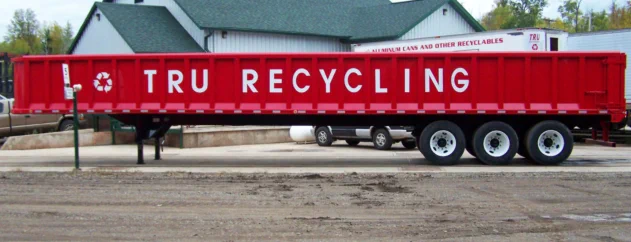

OFFICE HOURS:
Mon-Fri 8:30 AM-4:30 PM
SCALE HOURS:
Mon-Fri 8:30 AM-4:00 PM
Recycle today. Save tomorrow.
• Overview • Aluminum • Batteries • Copper • BrassDid you know that recycling saves HUGE amounts of
energy (and money) compared to mining raw
materials?
✅ Aluminum – Recycling aluminum saves 95% of the energy it takes to
make it from raw ore. That’s why cans are one of the most valuable
items to recycle!
✅ Batteries – Recycling batteries keeps toxic materials out of landfills AND allows valuable metals like
nickel, and cobalt to be reused—saving the massive cost and environmental toll of mining.
✅ #2 Copper – Recycling copper uses about 90% less energy than mining and refining new copper. Plus,
copper prices are high, so recycling puts cash back in your pocket.
✅ Yellow Brass – Recycling brass saves on both energy and resources since it’s a mix of copper and zinc.
It’s much more efficient to melt and reuse brass than to mine and refine both metals separately.
By recycling, you’re not only helping the environment—you’re also helping reduce energy demand, cut
pollution, and save natural resources.
♻ Recycle today. Save tomorrow.
Recycling vs. Mining – Savings Comparison Sheet Aluminum • Money Saved: Up to $1,000+ per ton • Energy Saved: ~95% • Why It Matters: Mining bauxite is extremely energy-intensive. Recycling aluminum is fast, efficient, and low- waste. Lead-Acid Batteries • Money Saved: $100–$160 per ton • Energy Saved: ~65–75% • Why It Matters: 95% of a lead-acid battery is recyclable. Recycling reduces hazardous waste and costs. #2 Copper • Money Saved: $1,500–$2,500 per ton • Energy Saved: ~85–90% • Why It Matters: Copper recycling keeps valuable metal in circulation with minimal environmental impact. Yellow Brass • Money Saved: $3,000–$5,000 per ton • Energy Saved: ~75–85% • Why It Matters: Brass is a mix of copper and zinc — both expensive to mine. Recycling retains metal value and lowers processing costs significantly.Scrap Aluminum
Description: We accept all types of scrap aluminum including cans, siding, sheet, and structural parts. Why Recycle: Aluminum is 100% recyclable and saves up to 95% of the energy needed to produce new aluminum from raw materials. Financial Savings Estimate: • Energy savings alone can reach up to 95%, which translates to thousands of dollars saved per ton. • The EPA and Aluminum Association report that recycling 1 ton of aluminum: o Saves about $1,000+ in energy costs. o Saves 14,000 kWh of electricity — enough to power a home for nearly a year. Bottom Line: Recycling aluminum is up to 20x cheaper and far more sustainable than mining it from raw materials. That’s why aluminum is one of the most valuable recyclables — both economically and environmentally.Scrap Aluminum and Copper Radiators
Description: Turn in old aluminum and copper radiators from vehicles, HVAC units, and machinery. Why Recycle: These radiators are full of valuable metals that can be reused in new products—saving resources and reducing waste.Scrap Cast Aluminum
Description: Bring in your scrap cast aluminum, like engine parts, patio furniture, and cookware. Why Recycle: Recycling cast aluminum reduces landfill waste and conserves the massive energy used in aluminum production.Scrap Sheet Aluminum
Description: We accept sheet aluminum from siding, trailer skins, signs, and more. Why Recycle: Sheet aluminum is lightweight and valuable. Recycling helps lower energy use and keeps materials in circulation.Scrap 6061 Aluminum
Description: We accept 6061-grade aluminum—common in construction, vehicles, and aerospace parts. Why Recycle: This durable alloy is highly recyclable, reducing demand for raw materials and saving energy.Scrap Automotive Batteries
Description: Recycle your used car batteries safely and responsibly. We accept all standard lead-acid automotive batteries. Why Recycle: Automotive batteries contain toxic materials. Recycling prevents pollution and allows up to 99% of each battery to be reused. Recycling vs. New Production Cost of Lead-Acid Batteries (e.g., car batteries) • Recycled lead is ~35–50% cheaper than newly mined lead. • Over 95% of a lead-acid battery can be recycled — including lead, plastic casing, and acid. • Manufacturing a new lead-acid battery using recycled materials can save $100–$160 per ton of batteries processed (depending on market rates). Energy and Environmental Savings • Recycling uses 65–75% less energy than primary lead production. • It reduces environmental damage and water/soil contamination from lead mining. Bottom Line: • Lead-acid battery recycling saves ~50% in material and energy costs, making it a well-established, cost- efficient system.Scrap Number 2 Copper
Description: We buy #2 copper—corroded or insulated wire, tubing with solder, and more. Why Recycle: Copper is highly valuable and endlessly recyclable. Recycling it saves energy and reduces mining.Scrap Yellow Brass
Description: Turn in yellow brass from keys, plumbing fixtures, decorative hardware, and more. Why Recycle: Recycling brass conserves both copper and zinc and gives old items a new purpose without quality loss. Yellow Brass Recycling vs. Mining — Cost Comparison Market Prices (2024–2025 averages): • Recycled yellow brass price: ~$1.80–$2.50 per lb • Cost to produce new brass from mined copper and zinc: o Copper (virgin): ~$4.50–$5.50 per lb o Zinc (virgin): ~$1.20–$1.60 per lb o Total cost to create brass from raw materials: ~$3.50–$5.00 per lb Savings per pound: Recycling yellow brass typically saves $1.50–$2.50 per lb, depending on market rates and quality. That translates to: $3,000–$5,000 saved per ton of yellow brass recycled vs. mined. Energy & Environmental Benefits • Recycling brass uses up to 75–85% less energy than producing it from raw materials. • It avoids the heavy environmental toll of mining both copper and zinc. Bottom Line: Recycling yellow brass saves 50–70% or more in total production cost and massively reduces energy use. That’s why it’s one of the most profitable and sought-after materials in scrap metal recycling.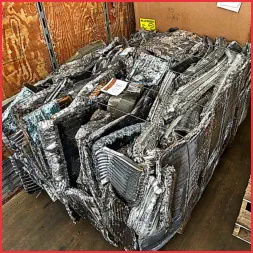
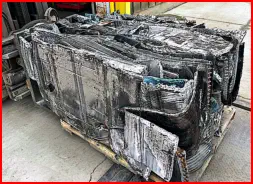
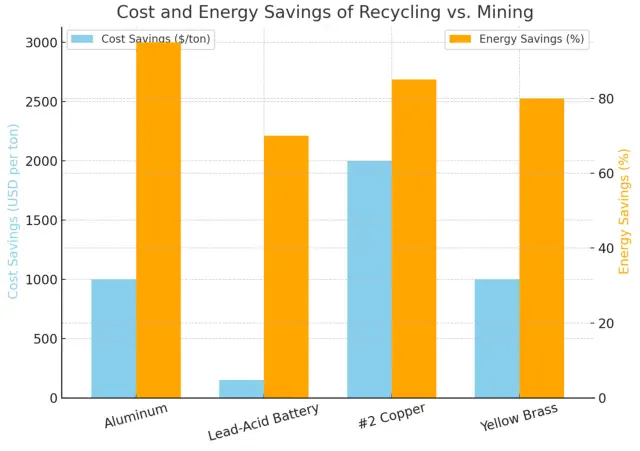
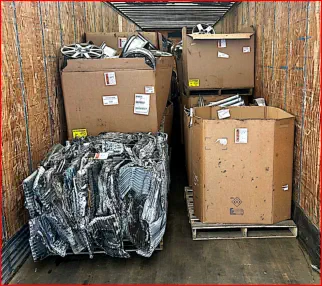

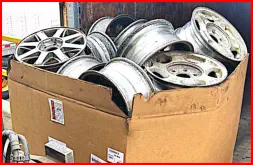

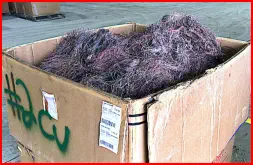

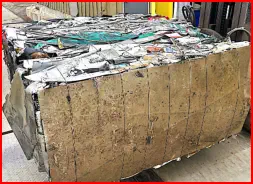
Saving the Planet One Ton at a Time!

© 2025 Tru Recycling LLC. Iron River, Michigan
Recycle today.
Save tomorrow.
• Overview • Aluminum • Batteries • Copper • BrassDid you
know that recycling saves HUGE
amounts of energy (and money)
compared to mining raw
materials?
✅ Aluminum – Recycling aluminum saves 95% of the
energy it takes to make it from raw ore. That’s why cans are
one of the most valuable items to recycle!
✅ Batteries – Recycling batteries keeps toxic materials out
of landfills AND allows valuable metals like nickel, and
cobalt to be reused—saving the massive cost and
environmental toll of mining.
✅ #2 Copper – Recycling copper uses about 90% less
energy than mining and refining new copper. Plus, copper
prices are high, so recycling puts cash back in your pocket.
✅ Yellow Brass – Recycling brass saves on both energy
and resources since it’s a mix of copper and zinc. It’s much
more efficient to melt and reuse brass than to mine and
refine both metals separately.
By recycling, you’re not only helping the
environment—you’re also helping reduce energy demand,
cut pollution, and save natural resources.
♻ Recycle today. Save tomorrow.
Recycling vs. Mining – Savings Comparison Sheet Aluminum • Money Saved: Up to $1,000+ per ton • Energy Saved: ~95% • Why It Matters: Mining bauxite is extremely energy-intensive. Recycling aluminum is fast, efficient, and low-waste. Lead-Acid Batteries • Money Saved: $100–$160 per ton • Energy Saved: ~65–75% • Why It Matters: 95% of a lead-acid battery is recyclable. Recycling reduces hazardous waste and costs. #2 Copper • Money Saved: $1,500–$2,500 per ton • Energy Saved: ~85–90% • Why It Matters: Copper recycling keeps valuable metal in circulation with minimal environmental impact. Yellow Brass • Money Saved: $3,000–$5,000 per ton • Energy Saved: ~75–85% • Why It Matters: Brass is a mix of copper and zinc — both expensive to mine. Recycling retains metal value and lowers processing costs significantly.Scrap Aluminum
Description: We accept all types of scrap aluminum including cans, siding, sheet, and structural parts. Why Recycle: Aluminum is 100% recyclable and saves up to 95% of the energy needed to produce new aluminum from raw materials. Financial Savings Estimate: • Energy savings alone can reach up to 95%, which translates to thousands of dollars saved per ton. • The EPA and Aluminum Association report that recycling 1 ton of aluminum: o Saves about $1,000+ in energy costs. o Saves 14,000 kWh of electricity — enough to power a home for nearly a year. Bottom Line: Recycling aluminum is up to 20x cheaper and far more sustainable than mining it from raw materials. That’s why aluminum is one of the most valuable recyclables — both economically and environmentally.Scrap Aluminum and Copper Radiators
Description: Turn in old aluminum and copper radiators from vehicles, HVAC units, and machinery. Why Recycle: These radiators are full of valuable metals that can be reused in new products—saving resources and reducing waste.Scrap Cast Aluminum
Description: Bring in your scrap cast aluminum, like engine parts, patio furniture, and cookware. Why Recycle: Recycling cast aluminum reduces landfill waste and conserves the massive energy used in aluminum production.Scrap Sheet Aluminum
Description: We accept sheet aluminum from siding, trailer skins, signs, and more. Why Recycle: Sheet aluminum is lightweight and valuable. Recycling helps lower energy use and keeps materials in circulation.Scrap 6061 Aluminum
Description: We accept 6061-grade aluminum—common in construction, vehicles, and aerospace parts. Why Recycle: This durable alloy is highly recyclable, reducing demand for raw materials and saving energy.Scrap Automotive Batteries
Description: Recycle your used car batteries safely and responsibly. We accept all standard lead-acid automotive batteries. Why Recycle: Automotive batteries contain toxic materials. Recycling prevents pollution and allows up to 99% of each battery to be reused. Recycling vs. New Production Cost of Lead-Acid Batteries (e.g., car batteries) • Recycled lead is ~35–50% cheaper than newly mined lead. • Over 95% of a lead-acid battery can be recycled — including lead, plastic casing, and acid. • Manufacturing a new lead-acid battery using recycled materials can save $100–$160 per ton of batteries processed (depending on market rates). Energy and Environmental Savings • Recycling uses 65–75% less energy than primary lead production. • It reduces environmental damage and water/soil contamination from lead mining. Bottom Line: • Lead-acid battery recycling saves ~50% in material and energy costs, making it a well- established, cost-efficient system.Scrap Number 2 Copper
Description: We buy #2 copper—corroded or insulated wire, tubing with solder, and more. Why Recycle: Copper is highly valuable and endlessly recyclable. Recycling it saves energy and reduces mining.Scrap Yellow Brass
Description: Turn in yellow brass from keys, plumbing fixtures, decorative hardware, and more. Why Recycle: Recycling brass conserves both copper and zinc and gives old items a new purpose without quality loss. Yellow Brass Recycling vs. Mining — Cost Comparison Market Prices (2024–2025 averages): • Recycled yellow brass price: ~$1.80–$2.50 per lb • Cost to produce new brass from mined copper and zinc: o Copper (virgin): ~$4.50–$5.50 per lb o Zinc (virgin): ~$1.20–$1.60 per lb o Total cost to create brass from raw materials: ~$3.50–$5.00 per lb Savings per pound: Recycling yellow brass typically saves $1.50–$2.50 per lb, depending on market rates and quality. That translates to: $3,000–$5,000 saved per ton of yellow brass recycled vs. mined. Energy & Environmental Benefits • Recycling brass uses up to 75–85% less energy than producing it from raw materials. • It avoids the heavy environmental toll of mining both copper and zinc. Bottom Line: Recycling yellow brass saves 50–70% or more in total production cost and massively reduces energy use. That’s why it’s one of the most profitable and sought-after materials in scrap metal recycling.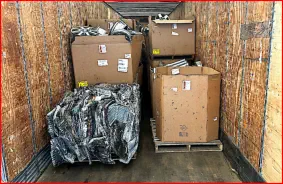
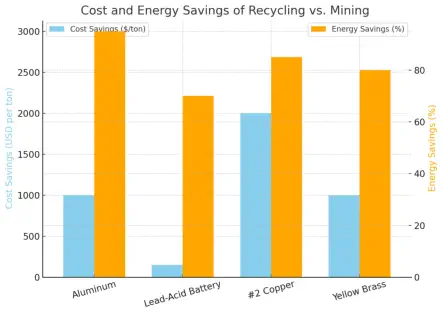

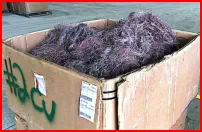
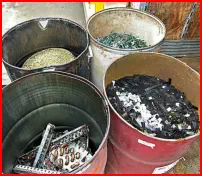
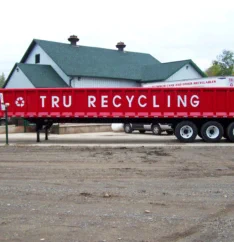

OFFICE HOURS:
M-F 8:30 AM-4:30 PM
SCALE HOURS:
M-F 8:30 AM-4:00 PM
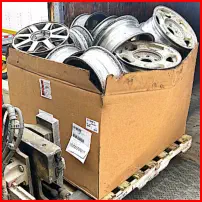
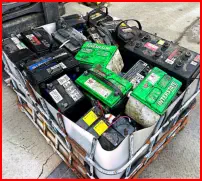
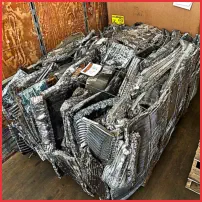
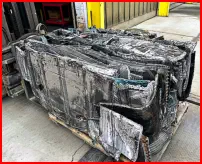
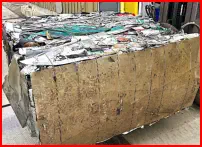
Tru Recycling

























